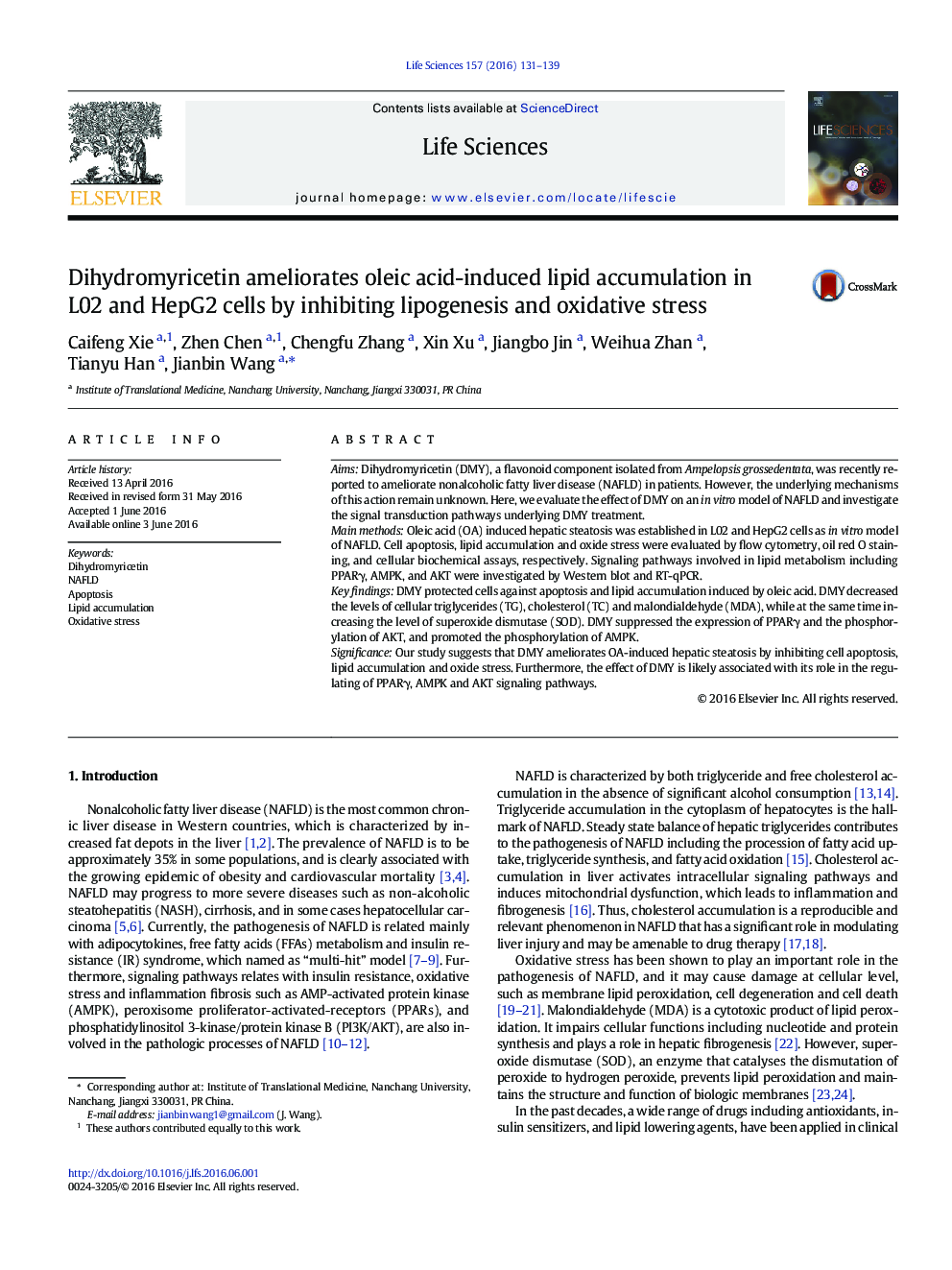| Article ID | Journal | Published Year | Pages | File Type |
|---|---|---|---|---|
| 2550430 | Life Sciences | 2016 | 9 Pages |
AimsDihydromyricetin (DMY), a flavonoid component isolated from Ampelopsis grossedentata, was recently reported to ameliorate nonalcoholic fatty liver disease (NAFLD) in patients. However, the underlying mechanisms of this action remain unknown. Here, we evaluate the effect of DMY on an in vitro model of NAFLD and investigate the signal transduction pathways underlying DMY treatment.Main methodsOleic acid (OA) induced hepatic steatosis was established in L02 and HepG2 cells as in vitro model of NAFLD. Cell apoptosis, lipid accumulation and oxide stress were evaluated by flow cytometry, oil red O staining, and cellular biochemical assays, respectively. Signaling pathways involved in lipid metabolism including PPARγ, AMPK, and AKT were investigated by Western blot and RT-qPCR.Key findingsDMY protected cells against apoptosis and lipid accumulation induced by oleic acid. DMY decreased the levels of cellular triglycerides (TG), cholesterol (TC) and malondialdehyde (MDA), while at the same time increasing the level of superoxide dismutase (SOD). DMY suppressed the expression of PPARγ and the phosphorylation of AKT, and promoted the phosphorylation of AMPK.SignificanceOur study suggests that DMY ameliorates OA-induced hepatic steatosis by inhibiting cell apoptosis, lipid accumulation and oxide stress. Furthermore, the effect of DMY is likely associated with its role in the regulating of PPARγ, AMPK and AKT signaling pathways.
